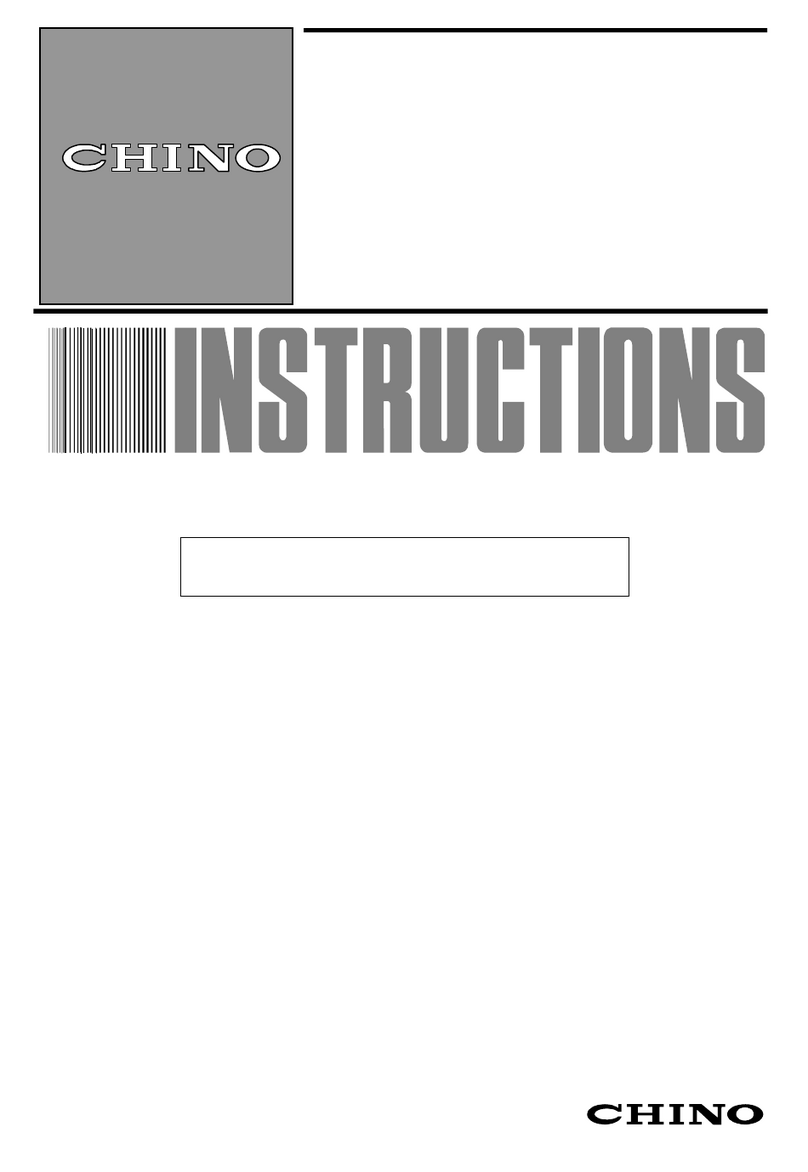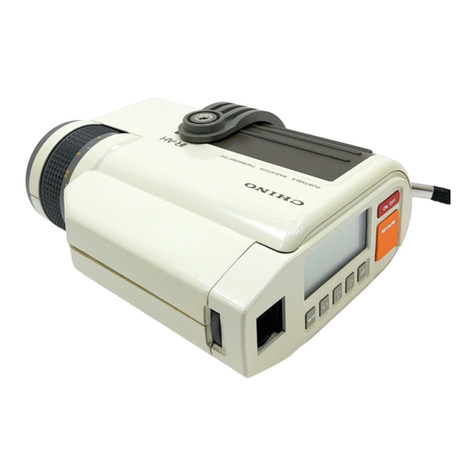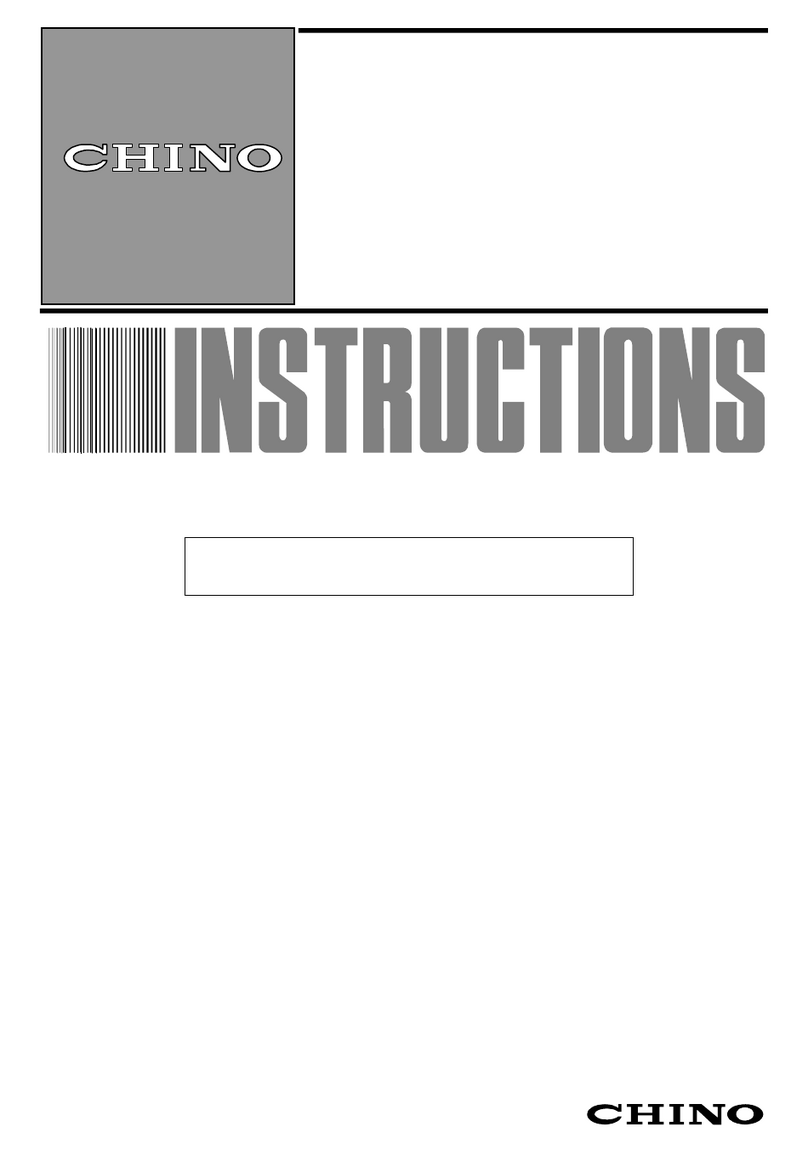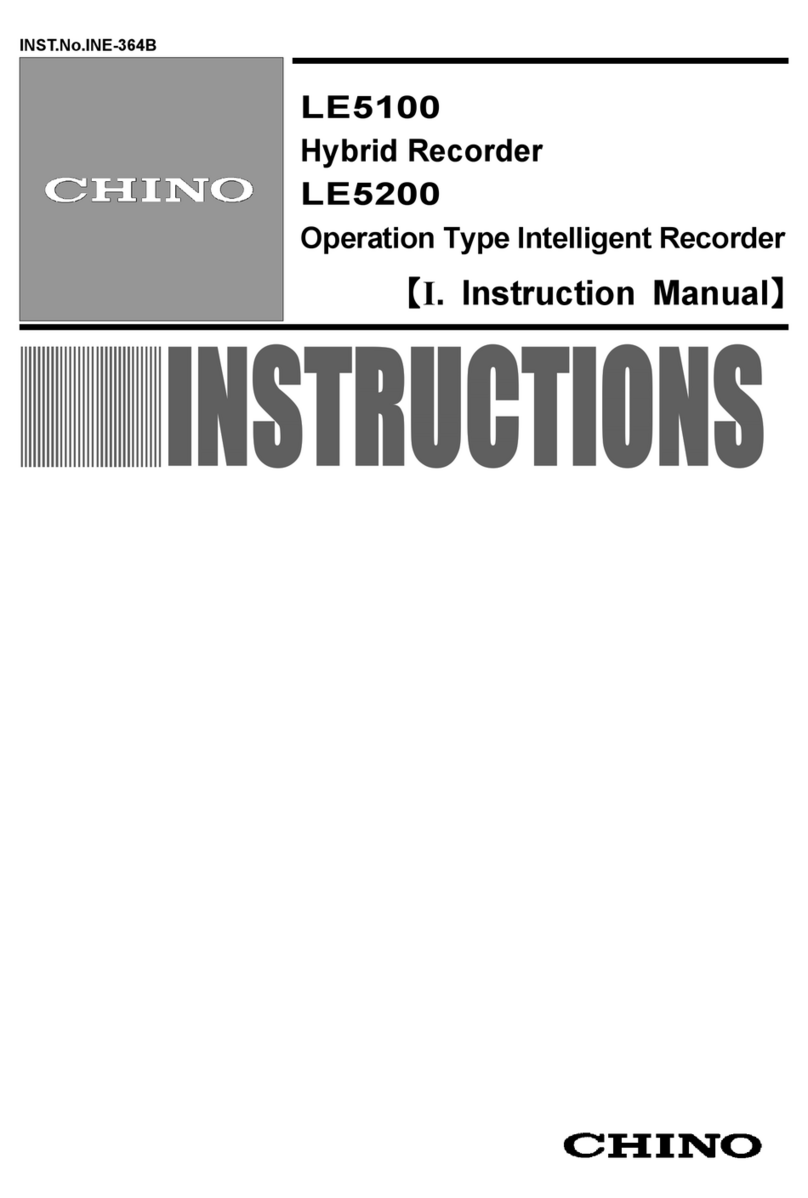INST No INE-403-0P0
−C3−
CONTENTS
1.
General
・・・・・・・・・・・・・・・・・・・・・・・・・・・・
1
1.1
Summary
・・・・・・・・・・・・・・・・・・・・・・・・・・・
1
1.2
Configuration
・・・・・・・・・・・・・・・・・・・・・・・・
1
2.
Models and accessories
・・・・・・・・・・・・・・・・・
2
2.1
Models・・・・・・・・・・・・・・・・・・・・・・・・・・・・・ 2
2.1.1 Detector unit
・・・・・・・・・・・・・・・・・・・・・・・・
2
2.1.2Reflectivetypefiver
・・・・・・・・・・・・・・・・・・・
2
2.1.3 Output checker plate for reflective
type fiver optics
・・・・・・・・・・・・・・・・・・・・・・
2
2.1.4 Reflective type fiver optics with lens attachment 2
2.1.5 Output checker plate for reflective
type fiver optics with lens attachment
・・・・・・・・
2
2.1.6 Transparent type fiver optics
・・・・・・・・・・・・・
2
2.1.7 Measuring cell for liquids
・・・・・・・・・・・・・・・
2
2.1.8 Connection cable
・・・・・・・・・・・・・・・・・・・・・
2
2.2
Accessories
・・・・・・・・・・・・・・・・・・・・・・・・・・
2
3.
Setting
・・・・・・・・・・・・・・・・・・・・・・・・・・・・・
3
3.1
Setting of dispswitches ・・・・・・・・・・・・・・・・・・ 3
3.2
Installation of reflective type fiver optics ・・・・・・ 5
3.2.1 Installation of tip part・・・・・・・・・・・・・・・・・・・ 5
3.2.2 Air purge(Only IR-WCRN)・・・・・・・・・・・・・・ 6
3.2.3 Connections with detector unit ・・・・・・・・・・・・ 6
3.2.4 Optical path ・・・・・・・・・・・・・・・・・・・・・・・・・ 7
3.2.5 Measuring place
(for objects of pulverized or granular substance) 7
3.2.6 For the objects in sheet state such as paper, etc
.
7
3.3
Installation of transparent type fiver optics ・・・・ 8
3.3.1 Installation of cell for liquids ・・・・・・・・・・・・・・ 8
3.3.2 Connections with detector unit ・・・・・・・・・・・・ 9
3.3.3 Disassemble cleaning ・・・・・・・・・・・・・・・・・・・ 9
3.4
Installation ofdetector unit ・・・・・・・・・・・・・・・10
3.4.1 Outside and mounting dimensions of
detector unit ・・・・・・・・・・・・・・・・・・・・・・・・・10
4. Connections
・・・・・・・・・・・・・・・・・・・・・・・・・
11
4.1
Connections
・・・・・・・・・・・・・・・・・・・・・・・・・・
11
4.2
Layout of connection cable
・・・・・・・・・・・・・・・
11
4.3
Multi-detector connections
・・・・・・・・・・・・・・・
12
4.3.1 Connections through relay box
・・・・・・・・・・・・・
12
4.3.2 Connections without relay box
・・・・・・・・・・・・・
13
5
.
Names and functions of component parts
・・・
14
5.1
Names and functions of detector unit
・・・・・・・・
14
5.2
Names and functions of setting display part
・・・・
15
6. Operation
・・・・・・・・・・・・・・・・・・・・・・・・・・・・
16
6.1
Confirmation before operation
・・・・・・・・・・・・
16
6.2
Setting of detector unit number
・・・・・・・・・・・・
16
6.3
Setting ofcalibration curve data
・・・・・・・・・・・・
16
6.3.1 Setting data
・・・・・・・・・・・・・・・・・・・・・・・・・・
17
6.3.2 Setting of calibration curve data
・・・・・・・・・・・
18
6.4
Preparation of calibration curbe
by knee point line approximation
・・・・・・・・・・・
18
6.4.1 Setting of knee point data
・・・・・・・・・・・・・・・・
18
6.4.2 Knee point line setting data
・・・・・・・・・・・・・・・
19
6.4.3 Setting ofcalibrationcurbedata
for knee point line approximation
・・・・・・・・・・
20
6.5 Setting of operating conditions
・・・・・・・・・・・・・
21
6.5.1 Setting data
・・・・・・・・・・・・・・・・・・・・・・・・・・
21
6.5.2 Setting
・・・・・・・・・・・・・・・・・・・・・・・・・・・・・
23
6.6
Calibration
・・・・・・・・・・・・・・・・・・・・・・・・・・
23
6.7
Setting of calibration curve number・・・・・・・・・24
6.8
Correction of calibration curve
・・・・・・・・・・・・
24
7.
Preparationof calibration curve
・・・・・・・・・・
25
7.1
Sample preparation ・・・・・・・・・・・・・・・・・・・・25
7.1.1 Powder or guranular
・・・・・・・・・・・・・・・・・・・
25
7.1.2Paper(sheetsubstance)
・・・・・・・・・・・・・・・・・・
26
!!!
!
!
!
!
!
!






































